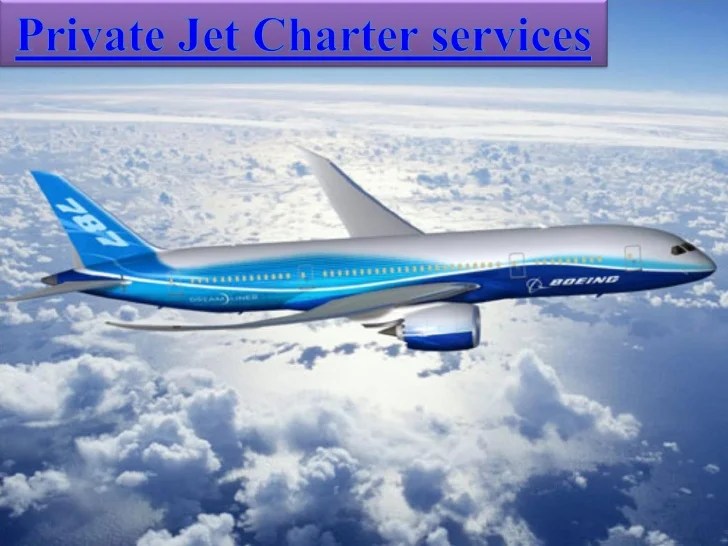Top Jet Charter Companies Your Guide
Top jet charter companies offer a world of luxury and convenience, but choosing the right one requires careful consideration. This guide navigates the complexities of the private jet charter industry, helping you understand the key factors that distinguish top-tier companies from the rest. We’ll explore safety standards, fleet sizes, service offerings, and customer experiences to empower you to make an informed decision for your next private flight.
From understanding the criteria that define a “top” company—safety records, fleet diversity, and exceptional customer service—to comparing different business models like fractional ownership and on-demand charters, we’ll delve into the nuances of this exclusive market. We’ll also examine the impact of technology and explore the various services offered, including catering, ground transportation, and concierge options. Ultimately, our goal is to equip you with the knowledge to confidently select a premium jet charter service that perfectly aligns with your needs and expectations.
Defining “Top” Jet Charter Companies
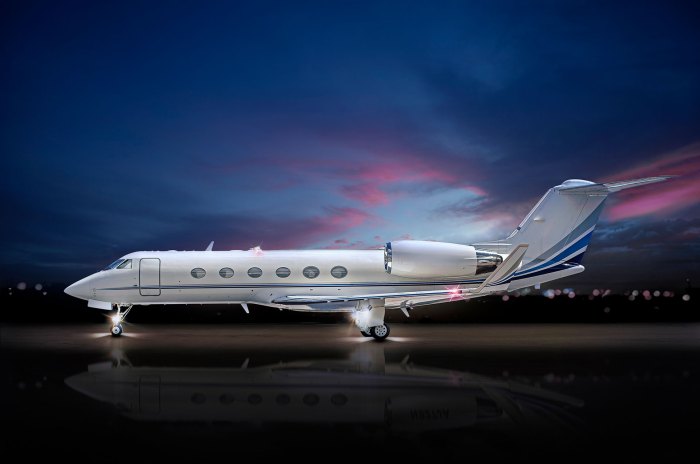
Source: journeyflight.com
Choosing the right private jet charter company is crucial for a smooth and safe travel experience. Several key factors contribute to a company’s ranking among the “top” providers, going beyond just the size of their fleet. It’s a complex equation involving safety, service, and operational efficiency.
Defining a “top” jet charter company involves a multifaceted assessment. It’s not simply about having the largest fleet or the most extensive geographic reach. Rather, it’s a blend of several critical criteria working in harmony to provide an exceptional customer experience.
Key Criteria for Defining Top Jet Charter Companies
Several key aspects contribute to a jet charter company’s reputation and ranking. These criteria are not equally weighted, and the relative importance can vary depending on individual priorities. However, they represent the core elements that consistently separate the best from the rest.
- Safety Record: This is paramount. A flawless safety record, demonstrated through meticulous maintenance protocols, pilot training, and adherence to stringent safety regulations, is non-negotiable. A company’s history of incident-free operations is a strong indicator of its commitment to safety.
- Fleet Size and Diversity: A diverse fleet allows companies to cater to various needs and budgets. A large fleet, however, is not a sole indicator of quality; maintenance and upkeep are equally important. The types of aircraft offered – from light jets to heavy jets – determine the company’s versatility and capacity to meet different travel requirements.
- Customer Service: Exceptional customer service extends beyond simple booking and flight operations. It includes personalized attention, proactive communication, and the ability to handle unexpected situations with grace and efficiency. This encompasses everything from pre-flight planning to post-flight follow-up.
- Geographic Reach and Operational Capabilities: A wide operational network ensures flexibility and accessibility. The ability to operate efficiently across diverse geographical locations, including handling permits and ground arrangements, is a crucial aspect of a top-tier service.
Factors Contributing to Reputation
A company’s reputation isn’t built overnight. It’s the culmination of several factors that influence the perception and trust of clients and industry professionals.
- Positive Client Reviews and Testimonials: Word-of-mouth and online reviews are powerful indicators of customer satisfaction and the overall experience provided by a charter company. Consistent positive feedback speaks volumes.
- Industry Recognition and Awards: Awards and recognition from reputable industry bodies signify the company’s commitment to excellence and adherence to high standards.
- Technological Advancements and Innovation: Embracing technology for improved operational efficiency, enhanced safety features, and streamlined booking processes demonstrates a forward-thinking approach.
- Transparency and Communication: Open and honest communication regarding pricing, operational details, and potential challenges builds trust and fosters a positive relationship with clients.
Importance of Certifications and Accreditations
Certifications and accreditations are not merely badges of honor; they represent a company’s commitment to adhering to industry best practices and safety standards. These certifications provide independent verification of a company’s operational capabilities and commitment to safety.
- ARGUS, Wyvern, IS-BAO: These are prominent safety audit programs that assess a company’s safety management systems and operational procedures. Companies that successfully complete these audits demonstrate their dedication to maintaining the highest safety standards.
- National and International Aviation Regulations Compliance: Adherence to all relevant national and international aviation regulations is a fundamental requirement. This compliance demonstrates responsibility and a commitment to operating within legal and safety frameworks.
Comparison of Ranking Methodologies
Different ranking methodologies exist, each with its own criteria and weighting system. Some focus heavily on safety records, while others prioritize customer reviews or fleet size. There is no single universally accepted ranking system.
- Safety-Focused Rankings: These rankings heavily emphasize safety records, incident rates, and adherence to safety protocols. They may utilize data from safety audits and industry reports.
- Client Review-Based Rankings: These rankings rely on client feedback and reviews, providing insights into the overall customer experience. These can be subjective and may not always reflect the complete picture of a company’s operational capabilities.
- Fleet Size and Geographic Reach-Based Rankings: These rankings consider the size and diversity of a company’s fleet and its operational reach. While useful, they don’t necessarily reflect the quality of service or safety standards.
Market Overview of Leading Jet Charter Companies: Top Jet Charter Companies
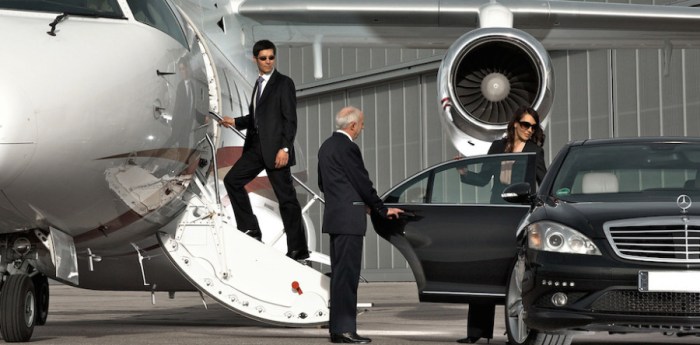
Source: westpalmjetcharter.com
The global private jet charter market is a dynamic and competitive landscape, driven by factors such as increasing high-net-worth individuals, advancements in aircraft technology, and a growing preference for personalized travel experiences. Understanding the market share and operational strategies of leading companies is crucial for anyone involved in or interested in this sector. This overview examines the key players, their business models, and the impact of technological innovation.
Precise market share figures for the top 5 jet charter companies are difficult to obtain due to the private nature of much of the industry’s data. However, a general overview can be provided based on fleet size, revenue estimates (where publicly available), and industry reputation. It’s important to note that rankings can fluctuate based on various factors, including seasonal demand and specific business strategies.
Leading Jet Charter Companies: Fleet Size, Age, and Service Areas
The following table provides a snapshot of some leading jet charter companies, illustrating their fleet size, average aircraft age, and primary service areas. Note that these figures are estimates and can vary based on data availability and company reporting practices. The average aircraft age is a general indicator and doesn’t reflect the full diversity of aircraft within each fleet.
| Company | Approximate Fleet Size | Average Aircraft Age (Estimate) | Primary Service Areas |
|---|---|---|---|
| NetJets | 700+ | 10-12 years | Global, with strong presence in North America and Europe |
| Flexjet | 200+ | 8-10 years | North America, Europe, and select international destinations |
| VistaJet | 300+ | 7-9 years | Global, focusing on long-haul flights |
| Jeppesen | N/A (data provider, not direct operator) | N/A | Global (data services) |
| Wheels Up | 150+ | 6-8 years | North America, with expanding international reach |
Comparative Analysis of Business Models
Leading jet charter companies employ various business models to cater to different client needs and preferences. The two most prominent models are fractional ownership and on-demand charter. Some companies offer both.
Fractional Ownership: This model allows clients to purchase a share of an aircraft, providing access to it for a specified number of hours per year. This offers cost advantages over outright ownership but requires a significant upfront investment. NetJets is a prime example of a company successfully utilizing this model.
On-Demand Charter: This model provides access to aircraft on an as-needed basis. Clients charter an aircraft for a specific flight, paying only for the time and services used. This offers greater flexibility but can be more expensive per flight hour than fractional ownership. Many companies, including VistaJet and Wheels Up, primarily operate on this model.
Hybrid models combining elements of both fractional ownership and on-demand charter are also emerging, offering clients greater choice and customization.
Impact of Technological Advancements
Technological advancements are significantly impacting the jet charter industry, improving efficiency, safety, and the overall customer experience. These advancements include:
Improved Flight Planning and Scheduling Software: Sophisticated software optimizes flight routes, considering weather conditions, air traffic, and fuel efficiency. This leads to cost savings and reduced travel times. Companies like Jeppesen play a significant role in this area.
Advanced Aircraft Technologies: Newer aircraft incorporate features such as enhanced avionics, improved fuel efficiency, and quieter engines, enhancing safety, comfort, and environmental sustainability. This translates to a better passenger experience and lower operational costs for charter companies.
Mobile Apps and Online Booking Platforms: These technologies streamline the booking process, providing clients with real-time access to availability, pricing, and flight information. This increased convenience and transparency enhances the overall customer experience and improves operational efficiency.
Key Services and Features Offered

Source: styleter.com
Choosing a top jet charter company means accessing a suite of services designed for ultimate convenience and luxury. Beyond simply getting you from point A to point B, these companies offer a comprehensive experience tailored to your specific needs. This section details the key services and features you can expect.
Aircraft Types Offered
Leading jet charter companies maintain diverse fleets to cater to various group sizes and travel preferences. Expect to find a range of aircraft, from light jets ideal for short hops and smaller groups, to mid-size jets suitable for longer distances and slightly larger parties, and finally, to heavy jets capable of transatlantic flights and accommodating larger groups with greater luxury. Very large cabin (VLC) jets are also available for those seeking the ultimate in spaciousness and comfort. Specific models vary by company, but generally include popular options like the Gulfstream G650, Bombardier Global 7500, Embraer Praetor 600, and Cessna Citation Sovereign+. The choice depends on your budget and the specific requirements of your trip.
Services Included in Jet Charter Packages
A typical jet charter package goes beyond just flight time. Most companies include comprehensive services to enhance your travel experience. This typically encompasses ground transportation to and from the airport in luxury vehicles (limousines, SUVs), catering services with customizable menus to accommodate dietary restrictions and preferences, and dedicated concierge services to assist with pre- and post-flight arrangements. Concierge services can include anything from arranging private security to securing last-minute dinner reservations at exclusive restaurants. Some companies even offer onboard Wi-Fi and entertainment systems. The exact inclusions vary based on the company and the specific package selected.
Pricing Models
Jet charter pricing models can differ, leading to potential variations in total cost. The most common are hourly rates, which charge based on the time the aircraft is in use, including flight time and taxi time. Per-leg rates charge a fixed price for each leg of the journey. All-inclusive packages offer a bundled price encompassing all aspects of the charter, providing greater cost certainty. Companies may also offer various add-on services at additional costs, such as specific catering options or extra ground transportation. Careful comparison of these models is essential for making an informed decision.
Benefits of Choosing a Top-Tier Jet Charter Company, Top jet charter companies
- Superior Safety Standards: Top companies maintain rigorous safety protocols and invest in advanced aircraft maintenance, ensuring passenger safety is paramount.
- Larger and More Diverse Fleet: Access to a wider selection of aircraft sizes and models to suit diverse travel needs and group sizes.
- Enhanced Customer Service: Expect personalized attention from dedicated flight consultants and concierge services.
- Greater Reliability and On-Time Performance: Reputable companies have a proven track record of on-time departures and arrivals.
- More Flexible Itinerary Options: Ability to customize flight schedules and routes to meet specific travel requirements.
- Higher Level of Luxury and Amenities: Access to premium onboard amenities and enhanced comfort features.
- Better Insurance Coverage and Liability Protection: Greater peace of mind knowing you’re protected in case of unforeseen circumstances.
Customer Experience and Feedback
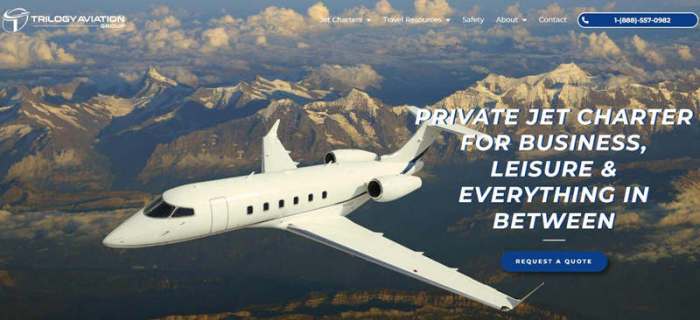
Source: noyapro.com
In the ultra-competitive world of private jet charter, exceeding customer expectations is paramount. A positive customer experience directly translates into repeat business, glowing referrals, and a strong brand reputation. Conversely, negative experiences can quickly damage a company’s image and lead to significant financial losses. Understanding how customer feedback shapes perception and implementing strategies to foster exceptional service are critical for success in this industry.
Customer reviews and testimonials significantly impact the perception of a jet charter company. Online platforms like Yelp, Google Reviews, and specialized aviation review sites are powerful tools for potential clients to research and compare services. Positive reviews build trust and confidence, showcasing a company’s reliability, professionalism, and commitment to customer satisfaction. Conversely, negative reviews can deter potential clients and damage a company’s reputation, highlighting areas needing improvement. The sheer volume of positive feedback can be as impactful as the specific details contained within individual reviews; a high average rating creates an immediate impression of quality.
The Influence of Customer Reviews and Testimonials
Positive reviews highlight aspects such as on-time performance, aircraft condition, ease of booking, and the professionalism and responsiveness of the flight crew and ground staff. They often describe specific instances of exceptional service, such as accommodating last-minute requests, handling unexpected delays with grace, or providing personalized touches that exceeded expectations. Negative reviews, on the other hand, may focus on issues like hidden fees, communication breakdowns, aircraft maintenance problems, or unhelpful customer service representatives. The impact of these reviews is amplified by the public nature of online platforms; a single negative review can reach a wide audience. Companies must actively monitor online reviews and respond promptly and professionally to both positive and negative feedback.
Exceptional Customer Service Practices in Jet Charter
Exceptional customer service in the jet charter industry goes beyond simply providing a safe and efficient flight. It involves anticipating client needs and exceeding expectations at every stage of the journey. Examples include personalized itineraries crafted to suit individual preferences, dedicated account managers who provide proactive communication and support, and seamless ground transportation arrangements. Proactive communication is crucial; keeping clients informed about flight schedules, weather conditions, and any potential delays demonstrates a commitment to transparency and builds trust. Offering premium amenities such as onboard catering tailored to dietary needs, in-flight entertainment options, and comfortable seating arrangements enhances the overall travel experience. Furthermore, personalized touches such as remembering client preferences from previous trips and offering tailored recommendations demonstrate a genuine interest in their well-being and create a lasting positive impression.
Handling Customer Complaints and Resolving Issues
Effectively handling customer complaints is essential for maintaining a positive reputation. A swift and empathetic response is crucial; acknowledging the client’s concerns and expressing a sincere desire to resolve the issue demonstrates professionalism and a commitment to customer satisfaction. A structured process for handling complaints, including clearly defined escalation procedures, ensures that issues are addressed efficiently and fairly. Offering a sincere apology, even if the company is not entirely at fault, can go a long way in diffusing a tense situation. Providing a concrete solution to the problem, whether it’s a refund, a discount on future services, or a gesture of goodwill, demonstrates a commitment to making things right. Following up with the client after the issue has been resolved to ensure their satisfaction further strengthens the relationship and demonstrates a dedication to customer service.
Building and Maintaining Strong Customer Relationships
Building and maintaining strong customer relationships requires a proactive and personalized approach. This includes regular communication, personalized service, and a commitment to exceeding expectations. Loyalty programs, exclusive offers, and personalized communications (such as birthday greetings or holiday messages) demonstrate appreciation for valued clients and encourage repeat business. Gathering and utilizing customer data to understand preferences and tailor services accordingly is another effective strategy. Proactive customer relationship management (CRM) systems can help companies track client interactions, preferences, and feedback, enabling them to personalize their services and anticipate future needs. Collecting feedback through surveys, reviews, and direct communication allows companies to continuously improve their services and address areas needing improvement. Ultimately, fostering strong customer relationships in the jet charter industry is a long-term investment that yields significant returns in the form of loyalty, positive word-of-mouth referrals, and a strong brand reputation.
Safety and Regulatory Compliance
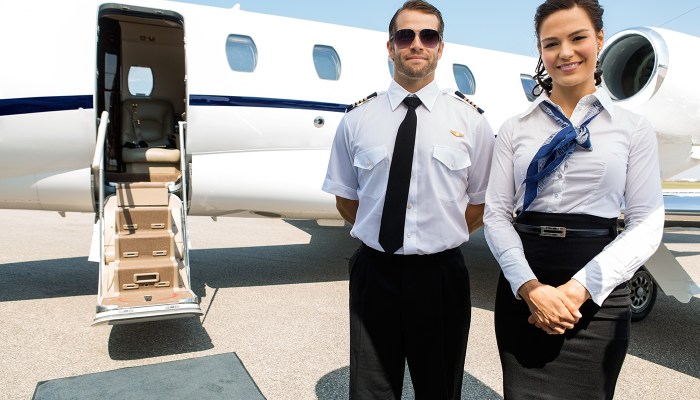
Source: charterjetone.com
Safety is paramount in the private jet charter industry. Reputable companies prioritize rigorous safety protocols and adhere strictly to all relevant regulations, ensuring passenger and crew well-being above all else. This commitment to safety underpins the entire operation, from meticulous aircraft maintenance to highly trained flight crews.
Safety protocols and procedures employed by top jet charter companies are extensive and multi-layered. These protocols are not merely checklists but a comprehensive system designed to minimize risks at every stage of flight.
Safety Protocols and Procedures
Reputable jet charter companies maintain rigorous safety protocols, including comprehensive pre-flight inspections, regular maintenance schedules exceeding regulatory requirements, and continuous pilot training programs incorporating advanced simulators and recurrent training on emergency procedures. These companies also employ sophisticated flight data monitoring systems to identify and address potential safety issues proactively. Pilot experience and qualifications are meticulously vetted, exceeding minimum regulatory standards. Furthermore, stringent operational control procedures, including weather monitoring and contingency planning, are implemented to ensure the safest possible flight.
The Role of Regulatory Bodies
Regulatory bodies, such as the Federal Aviation Administration (FAA) in the United States and the European Union Aviation Safety Agency (EASA) in Europe, play a crucial role in establishing and enforcing safety standards within the private jet charter industry. These organizations set stringent rules regarding aircraft maintenance, pilot training, operational procedures, and safety management systems. They conduct regular audits and inspections to ensure compliance and impose penalties for non-compliance. This oversight is critical in maintaining a high level of safety across the industry.
Common Safety Concerns and Mitigation Strategies
Several safety concerns are inherent to private jet operations. These include potential mechanical failures, adverse weather conditions, and human error. To mitigate these risks, top jet charter companies employ multiple strategies. These include rigorous maintenance programs exceeding manufacturer recommendations, advanced weather forecasting systems that allow for flight diversions or cancellations when necessary, and comprehensive pilot training focusing on risk management and decision-making under pressure. Furthermore, the use of advanced technologies, such as flight data monitoring and predictive maintenance, helps identify and address potential problems before they lead to incidents.
Layers of Safety Checks and Maintenance
Imagine a pyramid representing the layers of safety checks and maintenance. At the base is the daily pre-flight inspection, a thorough visual and functional check of the aircraft. Above that is the scheduled maintenance, following the manufacturer’s recommendations and often exceeding them. This includes routine checks, component replacements, and more extensive inspections at specific intervals. At the peak of the pyramid sits continuous monitoring and data analysis. This involves tracking flight data, analyzing maintenance records, and proactively addressing potential issues identified through data-driven insights. This multi-layered approach ensures that aircraft are consistently maintained to the highest safety standards.
Closure
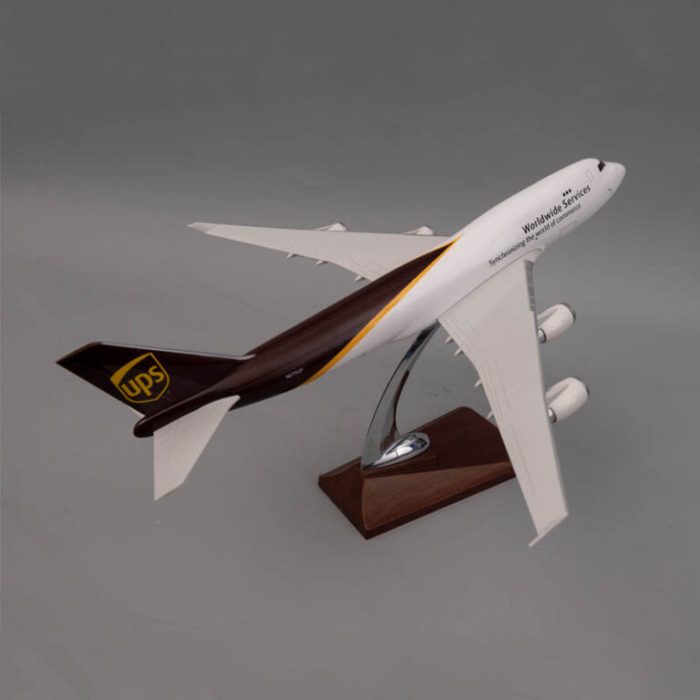
Source: noyapro.com
Selecting a top jet charter company is about more than just luxury; it’s about peace of mind and a seamless travel experience. By understanding the key factors—safety, service, and reputation—you can confidently choose a provider that meets your highest standards. Remember to research reviews, compare pricing models, and prioritize companies with a proven track record of excellence. With the right information, your next private jet journey will be nothing short of exceptional.


